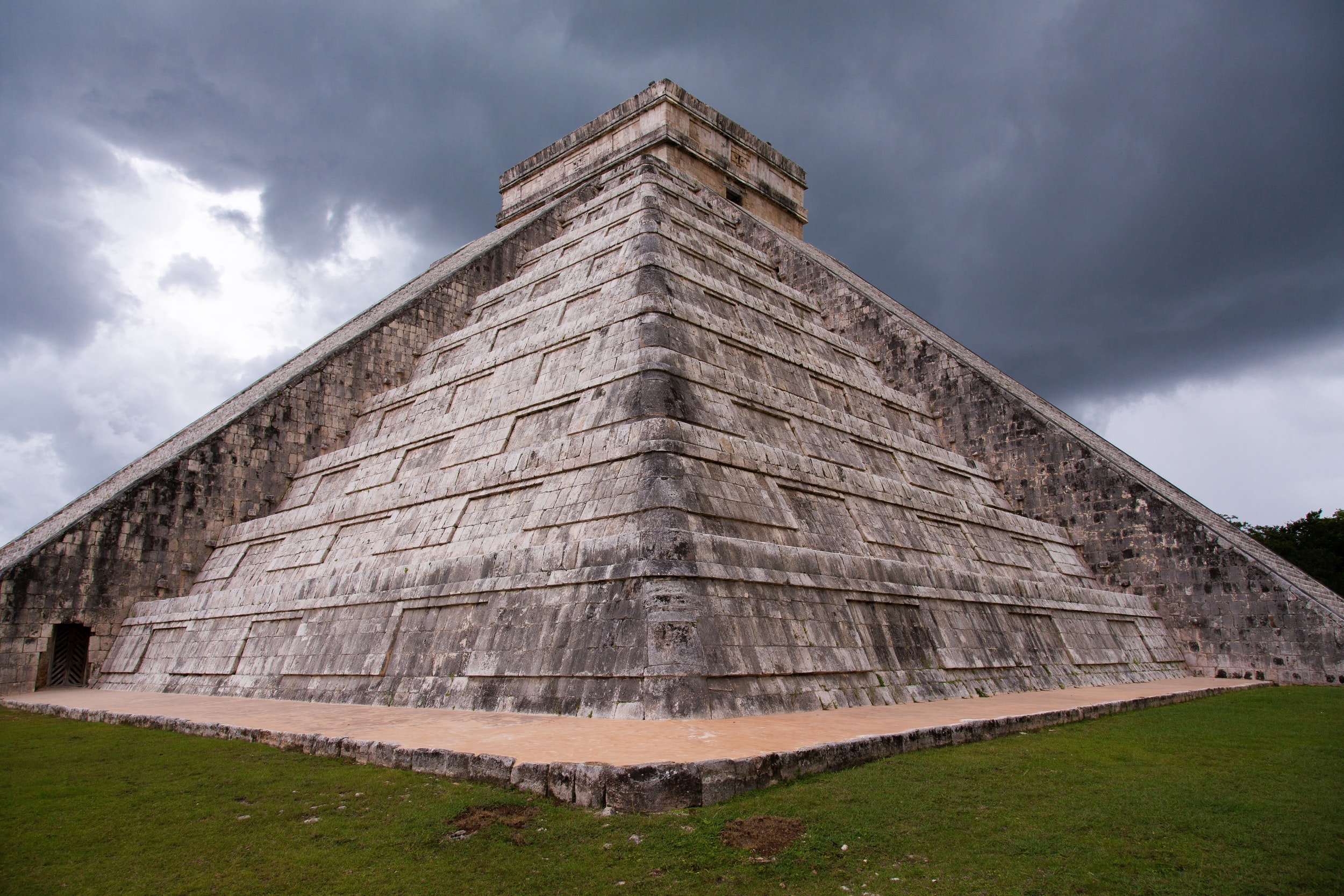The etheric or energy body is an essential part of our spiritual makeup. Closely aligned to the physical body, it is the body’s interface to the spirit. Thoughts, emotions, and illness are all reflected in the energetic body. Understanding the etheric body is critical for our wellness.
Understanding the Energy Body: Exploring the Spiritual Essence Within
From Roots to Wings: Balancing Your Root Chakra for a Sacred, Stable, and Soaring Life
Shamanic Healing For Chronic Illness
Many people turn to shamanic healing in the face of acute and chronic illnesses. As a tool to address the underlying spiritual causes of disease, shamanism is great. I have seen people with chronic health challenges such as Lyme disease, chronic fatigue syndrome, and fibromyalgia use shamanic healing with great results.
No form of spiritual healing should replace modern medicine and most shamanic healers are not licensed, health professionals. Having trained in shamanism does not legally qualify someone to claim to diagnose, treat, cure, or prevent any disease.
How Does a Shaman See and Work with Sickness?
Shamanism is the oldest known form of human spirituality. it goes back tens of thousands of years. Shamans were the healers, advisors, and spiritual functionaries in many tribal cultures all over the world.
Shamanic healing addresses the spiritual component of dis-ease. I like to tell my clients that their bodies, minds, and spirits are not individual things by overlapping things that interact. A shaman helps to create the spiritual conditions under which a person can heal. If you were to break your arm, you would go to the hospital to have the bone set and to get a cast. The cast doesn't heal your arm, it creates the conditions for the bone to mend.
A shaman might see illness as excess energy stuck to the client's energy system. Or, there may be a loss of power or soul essence. A shaman may see issues that stem from past lives or one's own ancestors.
Every shamanic practitioner works a little differently, so I'll speak for my own experience. When I journey on behalf of a client, I ask to be shown things about them that need healing, and exactly which ceremonies would be most beneficial on that day. I will see the client's subtle body, aura, and chakras which will give me a sense of what might be wrong. Sometimes I'm able to draw a client's attention to problems they weren't aware of.
What Does a Shamanic Healer Do?
First, many people use the terms shamanic healer, shamanic practitioner, and shaman interchangeably. In my own practice, I refer to myself as a shamanic practitioner. This is because one does not give oneself the label of "shaman" in my tradition.
Shamans are very concerned with restoring power to their clients. Chronic illness, depression, fatigue, low self-esteem, poor boundaries, suicidal feelings, and other common symptoms of power loss include chronic illness, depressed fatigue, low self-esteem, poor luck, and hard-to-diagnose health conditions.
A shaman is a type of healer who uses an alternate state of consciousness to enter the unseen world, which is made up of all unseen beings.
Shamanic healing consists of three things:
Entering an altered state of consciousness
Traveling in the spirit world
Working with helping spirits.
Beyond that, there are many ceremonies a shaman might perform. Here is just a small list:
Soul Retrieval
Shamans in many cultures perform soul retrieval ceremonies in response to something called soul loss. Soul loss is one of the effects of trauma and can lead to depression, anxiety, and dissociation. It's basically a fracturing of the soul body where some essential component gets lost.
Childhood trauma, in particular, is strongly linked to negative health outcomes such as chronic disease.
Untreated Trauma is so common, that nearly 100% of my clients come to me with either emotional or physical symptoms stemming from the trauma. Shamans use powerful spirit connections in order to find and return lost soul essences
Ancestral and Past Life Healing
Many shamanic healers also perform ancestral and past life healing ceremonies. This includes helping the client to connect with their ancestors and Guides, as well as resolving any karmic issues from past lives.
Current scientific research has shown a detectible transgenerational inheritance of trauma in humans and other animals. Epigenetics is an exciting branch of research that shows how our genes might express themselves differently. For example, we can detect epigenetic traces in the grandchildren of Holocaust survivors.
Shamans have long understood the importance of working with and healing our ancestors. Our own wellness is linked to our family history on a physical, mental, and spiritual level.
Shamanic Extraction
A shamanic extraction is a form of energy healing performed by a shaman to remove energetic intrusions. Energetic intrusions are just unwanted energy and thought-forms that get stuck in people's energy bodies. This energy isn't intelligent, like with a possession. It's like getting mud on your shoes.
As we move around through the world, sometimes unwanted energy sticks in our etheric field. This can be especially troublesome when we spend time in crowds or around people with strong negative feelings. People can also send out bad thoughts about us without intending to cause harm, but the energy of that sticks with us.
Spiritual intrusions can cause all kinds of problems because they block up the energy body. I have had a client with a frozen shoulder find relief and a better range of motion after an extraction. People with chronic illnesses can often benefit from extraction ceremonies as well.
It serves as a cleaning and tune-up of the energy body and the chakras. Thiis allows the subtle energy in your body to flow more freely and supports your health.
Power Animal Retrieval
One method that shamans use to restore power to clients is called power animal retrieval. Shamans have a connection to their spirit animals. These spirit animals, who they call power animals (PAs), transmit emotions and energies that impact the spirits of others through shamanistic rituals.
Frequently connecting clients with their own power animals can bring healing. Power animals can provide spiritual protection, guidance, and help keep the energy body intact. One of the major effects of receiving a power animal is just a greater sense of well-being. This alone can help create a healing state.
Spiritual Wound Healing and Curse Unraveling
Events in our lives have the ability to affect our soul bodies. Sometimes these soul bodies can receive wounds as the result of psychic attacks, or merely harsh words. If you've ever felt wounded by someone's words you know what this is like.
One form of magical or psychic attack is a curse. A curse is a spiritual act meant to harm another. There are lots of different ways curses can work, but they can cause illness, create calamity in your life, and reduce your power.
A famous type of psychic attack is the "evil eye" which actually uses the gaze and emotional energy to damage the energy body. This is like punching a hole in your skin. It causes damage but also leaves you open to infection and blood loss if you aren't careful. Curses and attacks such as these can turn spiritual issues into illnesses.
Shamans can work on behalf of their clients to unravel curses. They can also heal spiritual wounds.
How does Shamanic Healing Differ From Other Modalities Like Reiki?
Reiki is a form of energy healing. Reiki practitioners are primarily healers who have been trained in the art of maintaining good health and treating injuries, illnesses, and other physical ailments by establishing close personal relationships with various diagnostic energy centers within each human being which comprise chi (energy force) or ki(the vital breath).
The practitioner channels this universal energy through their own hands into the person.
Reiki, acupuncture, tai chi, and qigong work at the level of the energy body. They all work by manipulating or enhancing the subtle energies of the body. This is also called the etheric body. Shamans sometimes work on the energy body, usually to remove blockages, called intrusions.
However, most shamanic healers work at a different level of the spirit. The shaman specializes in health the soul body, also known as the astral body. The soul body can be damaged or wounded. You can lose essence from it during an illness, surgery, or as a result of trauma. Practitioners tend to take a holistic approach and are focused on restoring power to clients.
Besides working on multiple spiritual bodies, shamans also differ from other modalities in their work with helping spirits. A practitioner goes through training and initiations to"become the hollow bone." This is becoming a clear channel for the spirit to pass through and work. II do not take credit for any healing that takes place, I'm just a conduit.
Shamanism is not a new age practice. Some people will mix shamanic healing with other modalities, but the practices of shamanism have been around for tens of thousands of years.
Long Term Benefits of Shamanic Healing
With chronic health conditions, you want to make sure that whatever you're doing works for a long time.
You may wonder, "Is there any scientific evidence that supports the effectiveness of shamanic healing for chronic illness?" Mainstream science has really just begun to look at shamanic healing, but there are a few interesting bits of research.
There is contemporary research showing that shamanic healing causes physical, mental, and emotional changes in some chronic illnesses and that the changes last a long time. For example, a couple of studies were conducted with women with Temporomandibular joint disorders (TMDs). received shamanic healing. There was a reduction in the pain that did not decrease when the women were re-contacted 9 months later.
Scientific research into shamanic states and healing is pretty new, but there are some amazing things coming out. In a recent study of 500 shamanic practitioners using drumming to journey, their brain-state, measured by an EEG, was unique but close to that of someone on psilocybin.
Much research in the medical community focuses on plant medicine like ayahuasca, peyote, and psilocybin. This makes sense from a medical perspective - looking for patentable drugs and therapies.
Personally, I started studying shamanism to help with a chronic health condition. I have been able to live symptom-free for years. This is my personal anecdote, but I can speak to the effectiveness of shamanic healing over time.
Finding a Shamanic Healer to Work With
Finding a good fit with a healer is important. When people contact me for a session, I will refer them to a trusted colleague if the fit isn't good. the practitioner must always place the safety and wellbeing of the client first.
Shamanic practitioners are individuals and there is no governing body or anything, so they will each work in different ways. Here are a few things I would look for when you're trying to find a healer:
Shows Compassion - A practitioner should be an empathetic listener, and come from a place of kindness and wanting the best for their clients.
Honors Confidentiality - While most spiritual healers are not acting in the capacity of medical professionals, they need to take your confidentiality seriously. It's important to me that my clients feel free to share whatever they need to with me. If I were to post about clients on social media or blab about them to others, that would be a huge violation.
Has Great Integrity - Your shamanic practitioner must have impeccable ethics. This can be hard to determine up front. A practitioner should be open about as much as possible, without crossing personal boundaries. I allow my clients to ask me practically anything - so they can be comfortable with who I am.
Is Highly Trained - One can take a weekend class, or read a book about shamanism. That does not prepare that person for taking on clients. I didn't see a single client until I had more than 3 years of training with specialized training in soul retrieval, deposession, wound healing, curse unraveling, and teaching. A practitioner should be able to tell you about who they've trained with and for how long.
Maintains Good Boundaries - Good boundaries are as important for a shamanic practitioner as they are for a therapist. I've had clients ask to meet me for coffee which I politely declined. I have had people reach out who were in close relationships with someone I was close to. I told them I was happy to refer, but I don't want to cross that boundary. While people can share incredibly personal information with me in session, the relationship is always professional.
Beyond these qualities, understand that there should be an exchange for healing services. For the most part, this means money. Modern shamans live in a world where their physical needs are not taken care of by a tribe. In indigenous cultures, you might be expected to bring a valuable gift to a shaman to receive healing. The energy exchange is extremely important.
Some practitioners ask clients to fill out personal assessment questionnaires. Others require payment at the time of book. These small differences in business practices are normal and nothing to worry about by themselves.
A Balanced and Aligned Approach to Healing Chronic Illness.
One should maintain a balanced and aligned approach to healing chronic illness. See your doctor and follow through on treatments while supporting your healing journey with traditional medicine, integrative practices, energy work, and nutrition. Know what's working (and that some things take time to show full effect).
I highly recommend having a spiritual practice on a daily basis. This could be meditation, yoga, prayer - anything that nurtures your spirit.
If you are interested in talking to me about your own healing journey just click here.
Feeling disconnected? How can shamanic healing help?
My clients come to me for many reasons but one of the things I hear most often is, “I feel disconnected.” For many years, before I began to study and practice shamanism, I felt the same way, so I get it. It’s a feeling that’s hard to describe. The best way I can put it is that you feel cut off from your self, the world, even your loved ones.
Often this feeling comes with a flattening of the emotions. I have had clients describe feeling “dead inside.”
So what’s going on here, from a shamanic perspective? Also, is there anything that can help?
As I remind my clients, shamanism is a wonderful tool for addressing the spiritual components of illness or dis-ease. It does not take the place of medical help or psychological counseling.
With that in mind, it bears getting symptoms of any kind checked out by your provider. A shamanic healer can certainly help the healing process. And sometimes there may be no apparent physical or psychological cause a provider can find.
What’s the diagnosis?
In any healing session, I always begin with what’s called a diagnostic journey. This will tell me what work is in my client’s highest interest on that particular day. Many clients come to me asking for specific ceremonies. Sometimes they’re right about what they need, and sometimes they need some preliminary work before that can take place.
This complaint about the feeling of disconnection, more often than not, indicates to me what we call soul loss. Soul loss usually happens as a result of trauma in our lives, although there are a few other causes.
With soul loss, part of the soul breaks away to remain safe from what’s going on. That part can get lost and not come back. If you have ever had a shocking experience where time seemed to slow down, or you felt outside your body, or you felt like things weren’t real - this is what you’re experiencing.
How can shamanic healing help
Since soul loss is something that has occurred throughout human history, shamans all over the world have developed a technique for healing it. That technique is called soul retrieval.
Soul retrieval reunites the parts of the fractured self so that the client can re-integrate them. With re-integration, there can be a much greater sense of connection, joy, and completeness.
Many clients come to me specifically asking for soul retrieval. I still always do a diagnostic journey for them first. It’s quite possible that other work needs to happen for the soul-essence to feel safe enough to return.
I like to think of these soul parts as a fraction of ourselves that is stuck in the time it got lost. If you had soul part lost when you were 8 years old, that part is still 8 years old. It can’t grow and mature on its own, disconnected from the whole.
So we have to make that part feel safe to reintegrate. It might take a few weeks after a session for the part to completely settle in.
Once a part has been returned, however, it can bring significant power back. Imagine if you had lost your sense of smell when you were 12, and then it was suddenly returned. The world would seem richer, food would taste better. A similar thing happens when a soul essence returns.
I’ll never forget a client who, at the end of a session, excitedly told me, “I actually feel joy! I forgot what that was like.”
Shamanic Energy Healing
As a shamanism teacher, one of the questions I get asked a lot is, “how is shamanism different that energy work like Reiki or IET?” It’s a good question as, from the outside, all healing modalities work with mind, body, and spirit.
I cannot speak for the many healing modalities out there, but I can talk about shamanism.
I find it useful to think about humans as an intersection of many dimensions, like a stack of clear overhead projector sheets overlaid to create a single picture. On the gross level, we have a physical body. The physical body alone consists of a very complex arrangement of systems. You have cells, organs, muscles, and bones, a nervous and digestive system. Each of these systems can be broken down into different parts - ad infinitum.
You also have other bodies - energetic, spiritual, and soul bodies, energetic bodies, etc. Each of these is just as complex.
In general, shamans are not purely energy healing. Shamanic healing generally works on the level of the spirit and soul - not strictly the energetic body. The healing work that shamans do works at subtle yet powerful human levels that can affect many bodies at once. So there may, in fact, be energetic healing - but not always.
An example of a shamanic healing ceremony that works with the energy body is extraction. A shaman, with a helping spirit, removes energetic intrusions in the energy body in an extraction ceremony.
Other types of shamanic healing methods may work with soul essences, ancestral healings, curse removal, etc. These ceremonies tend to work on multiple levels.
For example, spirit might direct me to perform a soul retrieval ceremony on someone—the soul essence returning works at a profound level. The person might feel emotional changes immediately followed by physical changes. The healing has rippled through the overlapping systems.
In general, those who consider themselves strictly energy healers work primarily with different “levels” of the human system than shamans do. This does not make one modality any better than another. They’re like different specialties in medicine.
If you went to a doctor for chronic pain, for example, they might refer you to a neurologist or a physical therapist, depending on the source of the issue.
Some shamanic practitioners mix modalities. An individual healer might have also training in reiki or other energy healing modalities. A healer might perform a healing ceremony in trance, then perform some other energy healing work. This is, of course, OK as long as it’s in the interest of the client. My personal preference is to separate any shamanic work from anything else I might do.
















